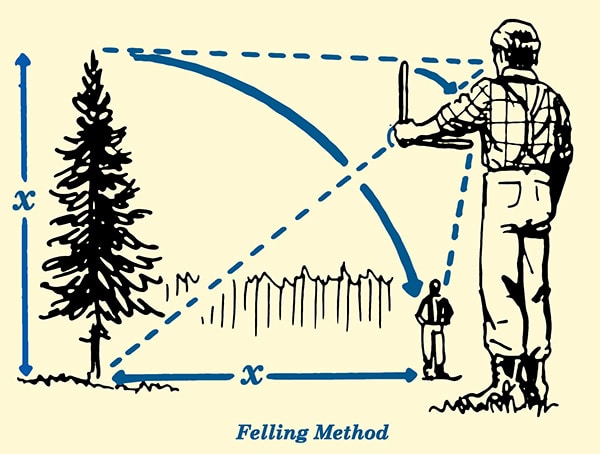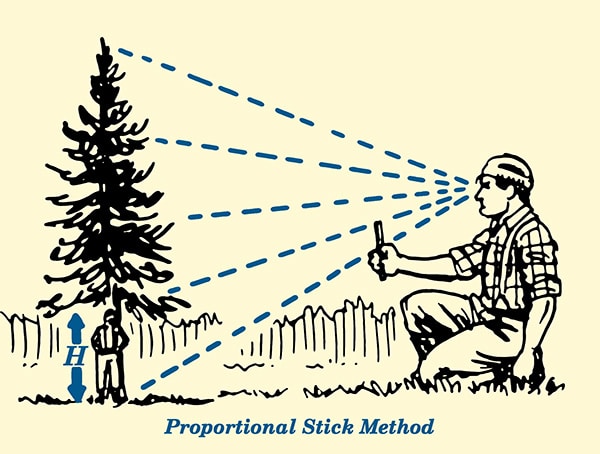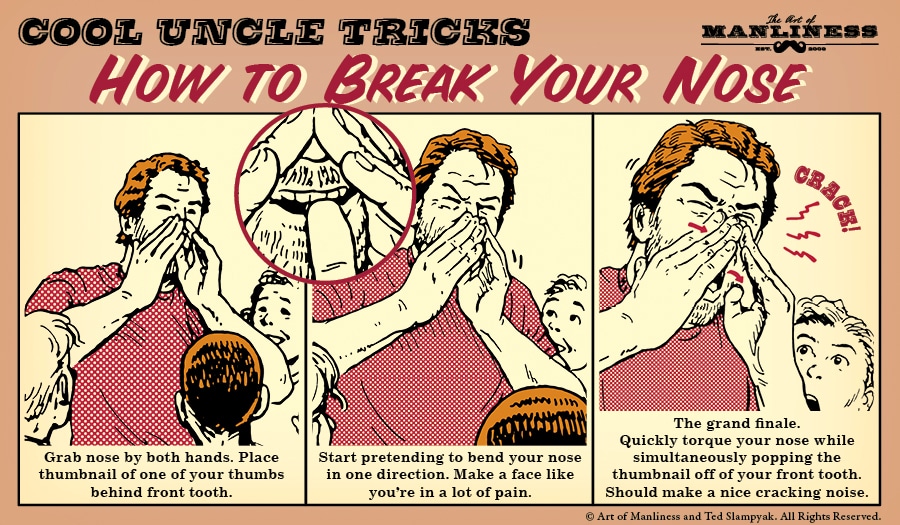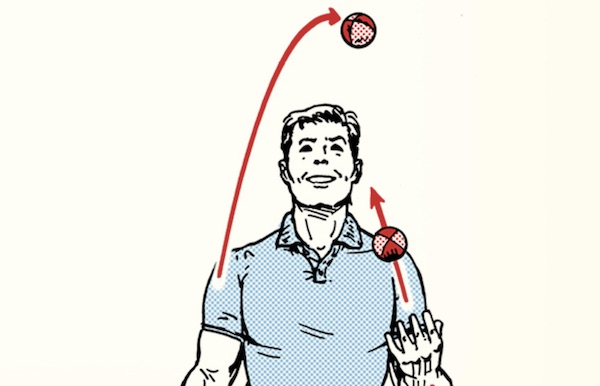When you’re out in the field navigating the land or doing any number of outdoor chores and tasks, you may for a variety of reasons need to measure the heights and widths of objects like trees and rivers. But oftentimes these objects are so large and out-of-reach that trying to measure them with a tape measure would be foolhardy and impractical.
Luckily, there are a few little field-expedient tricks that scouts have used for centuries to estimate the height and width of objects using nothing but sticks and a bit of geometry. While there are smartphone apps out there that can do the same thing, in order to become more antifragile, it’s always good to know how to do this kind of thing sans technology. Plus, it’s fun.
Note: For many of these methods, you’ll need to know the length in feet and inches of a normal pace for you, as pacing is required to determine the measurements. To find the length of your pace, take a normal step and measure from the heel of your back foot to the toe of your front foot.
How to Estimate Height in the Field
If you’re felling trees, you’ll want to know how tall they are beforehand so they won’t come crashing down on your car or campsite. But how do you measure the height of a tree without climbing up to the top with a tape measure?
Here are a few traditional tricks used by lumberjacks and scouts to estimate the height of trees and other tall objects like canyon cliffs and waterfalls.
The Felling Method

- Back far enough away from the object you’re measuring that you can see both the top and the bottom of it. Hold a stick upright at arm’s length, ensuring the top of the stick appears to touch the top of the object.
- Rotate your arm 90 degrees so it’s lined up with the horizon, simulating that the object has fallen, hence the term “felling.”
- Have your buddy stand at the point where it looks to you like the tip of the stick ends. Place a marker there, like a stone or another stick.
- Pace the distance between the marker and the base of the object to estimate its height.
The Stick Method

This method requires relatively flat ground to get a good estimation.
- Find a stick the length of your arm.
- Hold your arm out straight with the stick pointing straight up (90-degree angle to your outstretched arm).
- Walk backwards until you see the tip of the stick line up with the top of the tree. Your feet are now at approximately the same distance from the tree as it is high.
The Proportional Stick Method

This is a variation of the Stick Method and requires a second person.
- Have a buddy (whose height is known) stand beside the object to be measured.
- Stand far enough away from the object that you can see both the top and the bottom of it. Hold a pencil or stick at arm’s length, and with one eye, sight over the stick so that the top of it appears to touch the top of your friend’s head.
- Place your thumbnail on the stick where it seems to touch the base of the tree trunk. Now move the stick up to see roughly how many times this measurement goes into the height of the tree.
- Multiply the number obtained from step 3 with the height of your friend to determine the approximate height of the object.
Shadow Method

This method only works on a sunny day. The ground will need to be relatively flat, as any slope will throw off the measurement.
- Measure the shadow cast by the tree (from the base of the tree to the shadow of its top) and label this length as AB.
- Measure the shadow cast by someone or an object of known height. Label this length as CD.
- Calculate the height of the tree with the following formula (AB x the height of your body)/CD = ~ object’s height.
Estimating Widths in the Field
Let’s say you’re doing some land navigation and you come to a placid river that you need to cross. You know you can swim 100 yards easily, but the river looks wider than that. How can you figure out the width of the river without getting wet and without a tape measure?
Or let’s say you come to a ravine. How do you know how far the other side is so you can lash together a bridge to cross it?
Here are two methods that can solve these dilemmas and give you a rough estimate of widths.
Napoleon/Salute Method

- Stand as close to the shore of the river as you can.
- Bow your head, chin against chest. Hold your hand to your forehead, palm down (like you’re saluting).
- Move your hand down until the front edge of it seems to touch the opposite shore.
- Turn your whole body a quarter turn left or right, “transferring” the distance to the shore you’re standing on. Notice the point at which the edge of your hand seems to touch the shore upon which you’re standing. Pace to it. The distance to the point which the edge of your hand seems to touch is roughly the width of the river.
Stride Method

This method requires a bit of geometry, but can give you a fairly accurate estimation of the width of a river.
- Select an object on the opposite side of the river, such as a tree or rock and mark it as “A.”
- Place a stick on your side of the river exactly opposite of landmark A. Mark that stick as “B.”
- Walk along the shore at a 90-degree angle from Point B for a certain number of paces. Let’s say 50 steps, for example. Place a stick there. Mark that as point “C.”
- Continue walking for half the distance that you just paced. So in our example, that would be 25 paces. Place a stick here and mark it “D.”
- Turn away from the river and walk until marker C and A line up in a straight line. Place a stick here and mark it as “E.”
- Walk and count your paces from point D to point E. The distance between D and E is ½ the distance across the river. Double that number and you have the distance, in steps, across the river. Multiply the number of steps by the length of your pace to get the distance in feet.








